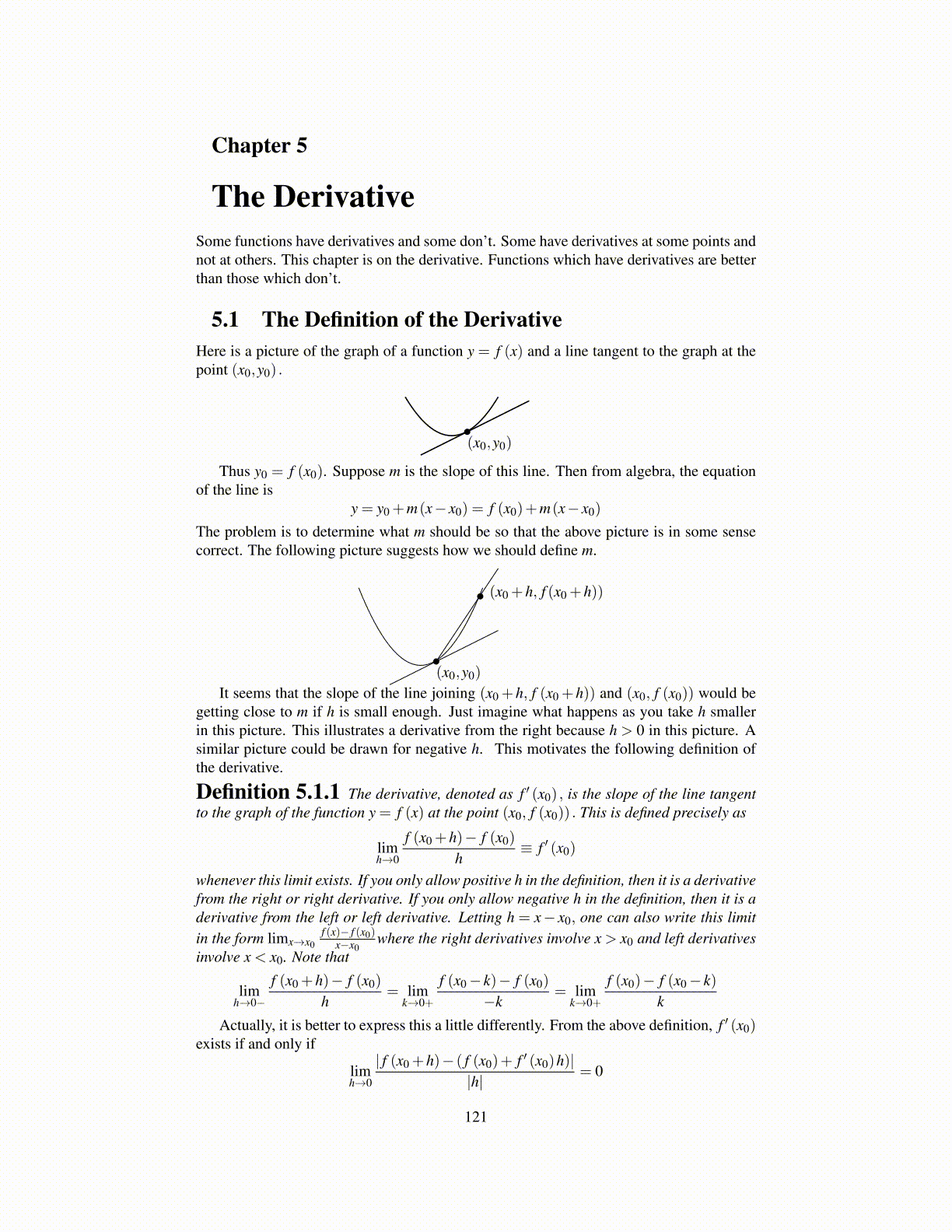
Chapter 5
The DerivativeSome functions have derivatives and some don’t. Some have derivatives at some points andnot at others. This chapter is on the derivative. Functions which have derivatives are betterthan those which don’t.
5.1 The Definition of the DerivativeHere is a picture of the graph of a function y = f (x) and a line tangent to the graph at thepoint (x0,y0) .
(x0,y0)
Thus y0 = f (x0). Suppose m is the slope of this line. Then from algebra, the equationof the line is
y = y0 +m(x− x0) = f (x0)+m(x− x0)
The problem is to determine what m should be so that the above picture is in some sensecorrect. The following picture suggests how we should define m.
(x0,y0)
(x0 +h, f (x0 +h))
It seems that the slope of the line joining (x0 +h, f (x0 +h)) and (x0, f (x0)) would begetting close to m if h is small enough. Just imagine what happens as you take h smallerin this picture. This illustrates a derivative from the right because h > 0 in this picture. Asimilar picture could be drawn for negative h. This motivates the following definition ofthe derivative.
Definition 5.1.1 The derivative, denoted as f ′ (x0) , is the slope of the line tangentto the graph of the function y = f (x) at the point (x0, f (x0)) . This is defined precisely as
limh→0
f (x0 +h)− f (x0)
h≡ f ′ (x0)
whenever this limit exists. If you only allow positive h in the definition, then it is a derivativefrom the right or right derivative. If you only allow negative h in the definition, then it is aderivative from the left or left derivative. Letting h = x− x0, one can also write this limitin the form limx→x0
f (x)− f (x0)x−x0
where the right derivatives involve x > x0 and left derivativesinvolve x < x0. Note that
limh→0−
f (x0 +h)− f (x0)
h= lim
k→0+
f (x0 − k)− f (x0)
−k= lim
k→0+
f (x0)− f (x0 − k)k
Actually, it is better to express this a little differently. From the above definition, f ′ (x0)exists if and only if
limh→0
| f (x0 +h)− ( f (x0)+ f ′ (x0)h)||h|
= 0
121